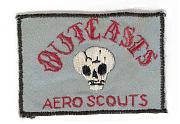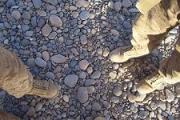Most air assets would not have been able to shoot in a town though because they use 500 lb bombs minimum. The gunship, unlike anything else though, can fire a single 2.5-lb HE 40-mm warhead anywhere you want it. This warhead is the rough equivalent of a hand grenade or the 40-mm grenade our soldiers shoot from their rifles. So, you have an air asset that fires an equivalent weapon as a single soldier. The ability to do this is battle-changing. The gunship's two biggest strengths, in my opinion, are the situational awareness and the low-yield weapons. People think the 105-mm is huge, but it has a 32-lb HE warhead, vs 500-lb warheads [on bombs]. Could you use these weapons to kill lots of innocent people? Yes, and it has unfortunately happened -- but only when ground force commanders and/or gunship crews have made significant mistakes.
Q: So if you were in charge, what would you do to improve Air Force COIN capability?
Seifert: If I were King, I'd have several irregular-warfare wings, but I'd break them down between [Close Air Support] and transport wings. I found no synergy from being part of a wing that had transports
and CAS aircraft. For example, I'd have an irregular wing of A-10s, AC-130s, an
OV-10-type aircraft -- and I think the
small gunship is an awesome idea. Not necessarily for operating out of small airstrips, but for the ability to buy enough of them so they're not hoarded and so they don't cause the Air Force to only have two dozen like they do the present gunships. A small gunship with one or two 30-mm cannons and a crew of about four would be awesome. I also would put the wings in ACC versus AFSOC, as I found AFSOC deep in their heart only wants to support "special ops" ground forces, whereas I have found ACC wants to kill bad guys for whoever was nice enough to point them out. The transport irregular warfare wing would obviously have some C-130s, CV-22s and a small transport. And both wings though would have a ... squadron for training friendly forces on how to operate the various wing aircraft.



 Reply With Quote
Reply With Quote




 "A Sherman can give you a very nice... edge."- Oddball,
"A Sherman can give you a very nice... edge."- Oddball, 




 - in which case we'll be in violent agreement
- in which case we'll be in violent agreement - Have a good weekend - I'm about to hit the beltway to make the drive back to PA
- Have a good weekend - I'm about to hit the beltway to make the drive back to PA


Bookmarks